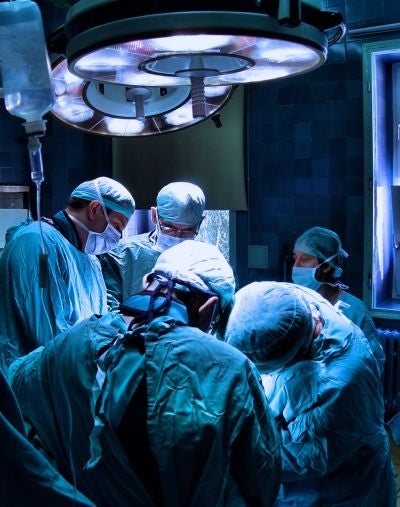Announced earlier this month, researchers in Singapore are using nanotechnology to develop a new anti-bacterial surface inspired by the slick luminosity of dolphin skin.
Researchers from A*STAR's Industrial Consortium On Nanoimprint (ICON) are creating a synthetic, chemical-free, anti-bacterial surface that they hope will reduce infections caused by pathogens such as S. aureus and E. coli. While still in the works, the team hopes the new material could eventually be used in common plastics, medical devices, and even ship hulls. The company also produces implanted lenses for the eye, and this material could potentially be used to create new anti-bacterial lenses.
The group is using nanoimprint technology, a form of nanotechnology, to make complex nanometer-sized patterns on surfaces to mimic the texture of natural surfaces. Taking their inspiration from the anti-fouling properties of dolphin and whale skins, the team aims to engineer a material with similar properties, such as "luminescence, adhesiveness, water-proofing, and anti-reflectivity," stated the company.
Scientists at the University of New Mexico in the US are also working on a new type of antimicrobial surface that is inhospitable to methicillin-resistant Staphylococcus aureus (MRSA) but won't harm people or animals.
The scientists developed a new polymer-type material, "conjugated polyelectrolyte," that becomes sterilized in the presence of regular fluorescent light, and has been shown effective at killing resistant strains of Staph. This opens up many potential applications, including the possibility of using these polymers as antibacterial countertops, but more work is ahead before consumers will see the product available.
The world has seen a slew of antibacterial and antibiotic products on the market over the years - soaps, socks, cutting boards, children's toys, toilet seats - most made with agents triclosan and tributyletin. More recently, antimicrobial silver ions have been manufactured into everything from washing machines to deodorant to repel bacteria. However, health and environmental concerns linger over whether or not the widespread usage of antibacterial products is strengthening the resistance of superbugs such as MRSA.
Access A*STAR's website: http://www.a-star.edu.sg/
Subscribe to Independent Premium to bookmark this article
Want to bookmark your favourite articles and stories to read or reference later? Start your Independent Premium subscription today.


Join our commenting forum
Join thought-provoking conversations, follow other Independent readers and see their replies